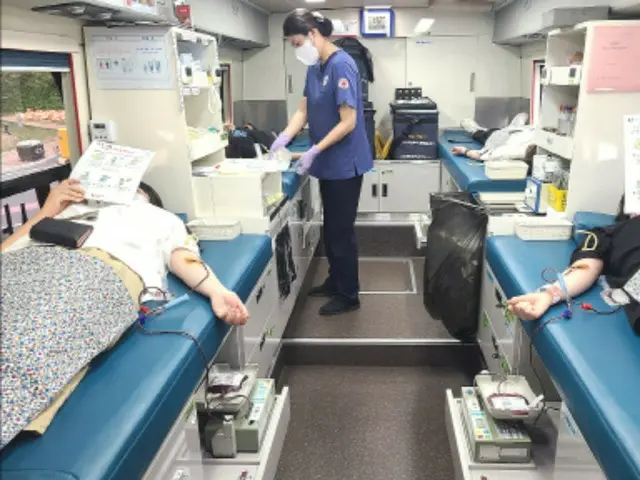According to the National Statistics Portal of the Ministry of Health, Labour and Welfare, the number of blood donors last year was 1,264,525, the lowest since related statistics began being collected in 2005.
The number of blood donors fluctuated between 1.4 million and 1.6 million from 2005 to 2019, but in 2020, when the COVID-19 virus infection spread,
The number of people with disabilities is expected to decrease to 1,281,773 in 2021, and then to 1,272,178 in 2022. The number of people with disabilities is expected to increase temporarily to 1,327,587 in 2022, but then to 1,307,770 in 2023.
The number of foreigners in Japan fell by 4, and by last year it had dropped to 1,264,525. This is a significant decrease of 25.4% compared to 2014, ten years ago (1,696,095).
The blood donation rate for the population of eligible age (16-69 years old) was only 3.27%. The national blood donation rate has been declining since 2004, when it was 4.56%.
It has continued to decline, dropping to the 3% range for the first time in 2017 (3.92%). In 2020 and 2021, during the COVID-19 pandemic, it was 3.25% and 3.24%, respectively.
On the other hand, due to an increase in repeat blood donors, the total number of blood donations was 2,855,540 last year, and is expected to reach 2,649,007 in 2022 and 2,770,000 in 2023.
By age, the largest number of cases was the 20-29 age group, at 35.5%, followed by the 16-19 age group (19.3%), the 40-49 age group (16.9%), and the 30-39 age group (
15.9%), 50-59 years old (10.4%), and 60 years old or older (2.1%). By occupation, the largest group was company employees at 34.3%, followed by university students (24.4%), military personnel (11.7%), and
The next highest number were high school students (11.0%) and civil servants (4.2%). Last year, 264,646 people donated blood for the first time, accounting for 10.0% of the total number of blood donations.
2025/04/07 05:39 KST
Copyrights(C) Herald wowkorea.jp 104

